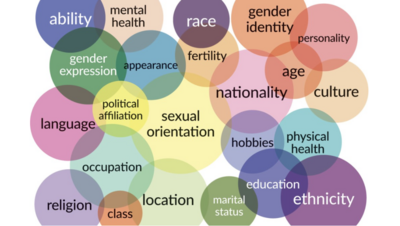Intersectionality: Difference between revisions
No edit summary |
No edit summary |
||
| Line 14: | Line 14: | ||
{{#evu:https:// | {{#evu:https://www.youtube.com/watch?v=akOe5-UsQ2o|alignment=center}} | ||
If you have any suggested revisions or additional resources to share related to the above content, please email them to kenzie@lehub.ca. | If you have any suggested revisions or additional resources to share related to the above content, please email them to kenzie@lehub.ca. | ||
Revision as of 15:32, 1 September 2022
Coined by Kimberle Crenshaw, intersectionality is "a lens, a prism, for seeing the way in which various forms of inequality often operate together and exacerbate each other. We tend to talk about race inequality as separate from inequality based on gender, class, sexuality or immigrant status. What’s often missing is how some people are subject to all of these, and the experience is not just the sum of its parts." -Kimberle Crenshaw [1]
Intersectionality is an "analytical angle that provides a non-hierarchical understanding of power dynamics and oppression(s), especially when observed simultaneously." - Lourdenie Jean [2]
"Intersectionality refers to a transdisciplinary theory aimed at understanding the complexity of identities and social inequalities through an integrated approach. It refutes the partitioning and the hierarchization of the main axes of social differentiation which are the categories of [...] gender, class, race, ethnicity, age, handicap and sexual orientation. The intersectional approach goes beyond a simple recognition of the multiplicity of systems of oppression operating from these categories and postulates their interaction in the production and reproduction of social inequalities (Crenshaw 1989; Collins 2000; Brah & Phoenix 2004)." - Sirma Bilge [3]

If you have any suggested revisions or additional resources to share related to the above content, please email them to kenzie@lehub.ca.
